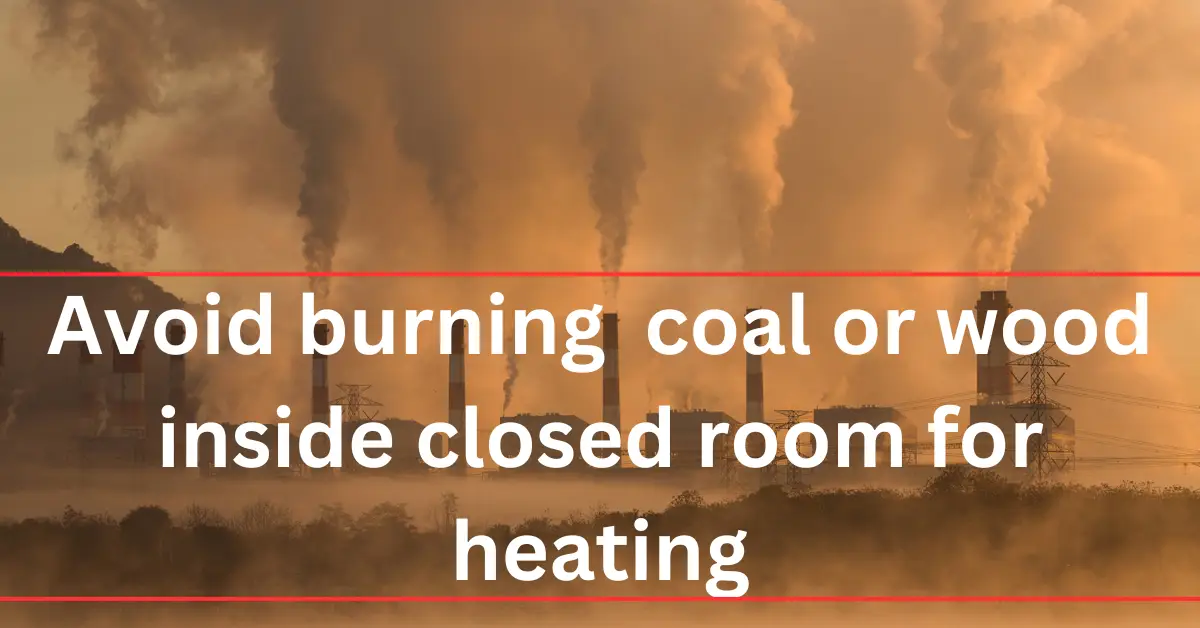Impact of carbon monoxide poisoning inside room
Introduction Carbon monoxide poisoning and Carbon monoxide detector:
Carbon monoxide poisoning and Carbon monoxide detector is a challenge In the pursuit of comfort and convenience, we often overlook the invisible dangers that can lurk within our own homes. One such silent threat is carbon monoxide poisoning and carbon monoxide detection, a colourless, odourless gas that can have severe consequences when present in enclosed spaces. Understanding the impact of carbon monoxide inside a room is crucial for safeguarding the health and well-being of our loved ones.
The Nature of Carbon Monoxide Poisoning :
Carbon monoxide is produced through the incomplete combustion of fossil fuels such as gas, oil, and wood. But what exactly is incomplete combustion? to answer this consider a scenario where less oxygen is available during the burning in the atmosphere or organic fuel is burnt in the presence of less oxygen, Carbon monoxide is produced
This is an easy-to-understand condition when you look at the components from the chemical formula carbon monoxide represents. During any such process, air is passed through coke, a fuel source with high carbon content. As a result, carbon dioxide is produced. This carbon dioxide then forms an equilibrium state with the remaining hot carbon and gives carbon monoxide. This typical reaction is known as the Boudoir reaction. The reaction that gives the product as CO which is the carbon monoxide chemical formula is given below:
CO2 + C → 2CO.
Similarly, another source to produce carbon monoxide is water gas. It is a reaction in between steam and carbon which occurs endothermically. It produces carbon monoxide and hydrogen as a result. The balanced carbon monoxide equation for the reaction is shown below:
H2O + C → H2 + CO.
Common household appliances, including gas stoves, furnaces, and water heaters, can be sources of CO if not properly maintained or ventilated. Once released into the air, CO can accumulate in enclosed spaces, reaching dangerous levels that pose significant risks to human health.
Health Impacts:
When inhaled, carbon monoxide interferes with the body’s ability to transport oxygen, binding to haemoglobin in the blood more strongly than oxygen does. This results in a reduction of oxygen supply to vital organs and tissues, leading to a range of health issues. The symptoms of carbon monoxide poisoning can be subtle and often mimic those of other common illnesses, making it challenging to identify without proper testing.
Short-term exposure to elevated levels of carbon monoxide can cause symptoms such as headaches, dizziness, nausea, and confusion. Prolonged exposure or exposure to higher concentrations can lead to more severe consequences, including unconsciousness, brain damage, and even death.
Most Vulnerable Populations to carbon monoxide poisoning:
Certain groups of individuals are particularly susceptible to the effects of carbon monoxide. Infants, elderly individuals, and individuals with pre-existing respiratory or cardiovascular conditions are at a higher risk of experiencing severe health impacts from CO exposure. Additionally, pets can also be affected, serving as an early warning system by using carbon Monoxide detector with alarm for the presence of this silent killer i.e., carbon Monoxide in the home.
Carbon monoxide (CO) poisoning incidence also rises with the onset of cooler weather and greater use of heating systems. The symptoms of COVID-19 may overlap with symptoms of CO poisoning, including headache, dizziness, weakness, nausea, vomiting, chest pain, and altered mental status with no alternative explanation. For more details click here
Carbon Monoxide death news is seen every day in newspapers some of the articles are shown below:

It is observed that during deep sleep people are not able to react for slowing increasing Carbon, increasing level due to incomplete combustion of fuels/woods used for heating the room during winter. The main reason is combustion consumes the oxygen available in the room and increase the carbon monoxide poisoning.
Carbon Monoxide Poisoning Prevention and Carbon Monoxide Detection:
Protecting your home from carbon monoxide begins with prevention and detection measures. Regular maintenance of fuel-burning appliances, proper ventilation, and installation of carbon monoxide detectors are essential steps in mitigating the risk. Detectors should be strategically placed throughout the home, especially near bedrooms, to ensure early detection of any CO presence.
In many regions, there are legal requirements and building codes that mandate the installation of carbon monoxide detectors in residential properties in many countries, but this is not mandatory in India. However, Homeowners and landlords can take proactive steps and click here to get the carbon monoxide detector for deployment in your premises. Regular checks and battery replacements in detectors are crucial to ensure their effectiveness.
Conclusion:
The impact of carbon monoxide inside a room is a critical concern that demands our attention. As responsible homeowners, it is our duty to prioritize the safety of our households by implementing preventive measures and staying informed about the risks associated with CO exposure. By raising awareness and taking decisive actions, we can create homes that are not only comfortable but also safe havens for everyone inside. Remember, when it comes to carbon monoxide, awareness, and vigilance along with deploying sensor device can be the difference between life and tragedy. Safety of the citizens is the duty of the Government hence Government of India should consider making mandatory installations of carbon monoxide sensors in every home and buildings.










